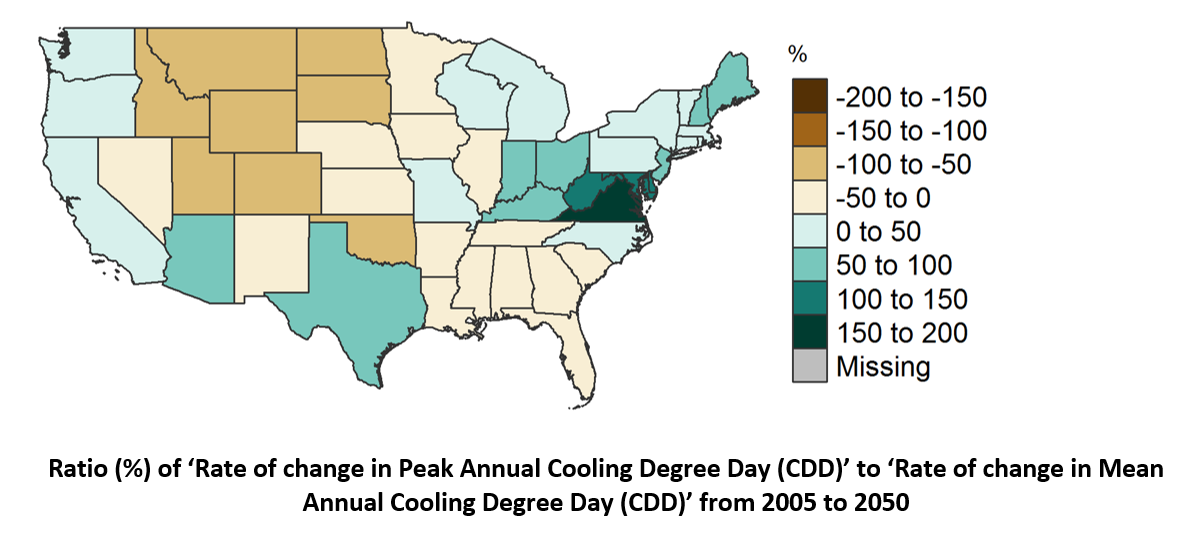Impacts of climate variability and extremes on US power system capacity and operations
Electricity demand is expected to grow over the coming decades creating a need for long-term power sector planning. Planning will require two key considerations. First, maintaining reliability requires enough capacity to supply electricity during hours of peak demand. This requires an understanding of the character of load profiles and the availability of dispatchable electricity. Second, understanding the resilience of the power sector to future stressors will require an assessment of the interactions of the power sector with co-evolving natural and human systems within a multi-sectoral context. For example, future temperature increases could lead to an increase in the demand for air conditioning resulting in increased peak demands and consequently the need for additional capacity.
Many analytical tools are used for long-term power sector planning. Power sector focused models capture the complexities of electricity supply and demand but are limited in capturing the interactions of the sector with the broader system. In contrast, multi-sector human-Earth system models capture complex relationships across sectors and systems but represent power sector dynamics at fairly aggregate levels.
We study the evolution of the electricity system by simultaneously accounting for power sector focused process dynamics and the interactions of the power sector with the broader system under a consistent integrated framework. To do so, we make improvements to GCAM-USA, a long-term multi-sector human-Earth system model. We incorporate i.) Information about sub-annual demand profiles combined with the ability to separate investment and operation decisions to track capacity requirements in response to changes in peak demands and ii.) Empirically derived relationships between temperature change and peak electricity demands in the building sector. Using the improved model, we study investments and operations in the US power sector under plausible scenarios of future temperature variability.

